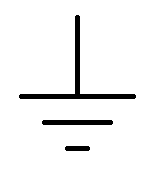To measure the height of a mountain, where do you start?
Mount Everest is the tallest mountain in the world at 29,029 feet above sea
level. However, Mauna Kea, the 13,803-foot-tall mountain on Hawaii's Big
Island is actually about 33,000 feet tall if you measure from its base
rather than sea level. This raises an important question. When you measure
the height of a mountain, from where do you start measuring? Do you start at
sea level? How about the shore of the Dead
Sea (the lowest point on dry land). How about the Ocean floor or the
bottom of the Marianas Trench. If you measure from the center of the
earth, you will find that the tallest mountain is actually Chimborazo in
Ecuador.
1 At 20,560 feet it's not even the tallest mountain in
the Andes measured from sea level.
Sea level isn't the same altitude around the earth. The earth
is an oblate spheroid; it is flattened at the poles and bulges at the
equator. This makes sea level higher at the equator than it is nearer
the poles. Also, the gravity around the earth is not uniform.
Areas of higher gravity, called mass concentrations or mascons attract
water to them making sea level in the vicinity higher than elsewhere.
Therefore, sea level--our beloved zero altitude--is higher in some
places than others. When you measure the height of Mt. Everest above
sea level, you are starting a shorter distance from the center of the
earth than when you measure mountains in the Andes.
When you measure the height of a mountain, you are actually comparing
the difference between two heights. The height of a mountain is
meaningless unless you have a starting point to which to compare it. Sound
familiar? So how do we decide where to start measuring a mountain? It's
actually quite arbitrary and is open to argument.
To measure voltage, where do you start?
We have the same
problem with an electronic circuit. When you measure voltage, where do
you start? It is often logical to start at the lowest possible voltage,
such as the negative side of the battery powering the circuit. However,
it is often more logical to pick some higher voltage, such as the
junction between two batteries. Then the lowest possible voltage will
be a negative voltage.
2
Regardless of the choice in a starting point, the voltage at that point
will be called “ground” (or “earth” in England, Australia, etc.) and
will be the official “zero volts” for that circuit. When measuring
voltage for the circuit as a whole, you will firmly plant the black
probe of the voltmeter at the designated ground and measure all
voltages from there.
| Once you decide where ground (0 volts) is, that is where you place the black lead
of your voltmeter to measure voltages compared to ground. |

|
|

|
|

|
Here, ground is the lowest possible voltage. All voltages are the same as ground or higher.
|
|
Here, ground is higher than the lowest possible voltage. Some voltages are higher than ground.
|
|
Other voltages are lower than ground (negative voltages).
|
Types of ground
The ground we just talked about is an arbitrary point somewhere in a
circuit that we compare all other voltages to. This is often called a
common ground. However, from an electrician's point of view, it's not
quite so arbitrary. To an electrician, ground is an actual connection to
the earth. In electronics, this is called a “true earth ground” (it is
still the zero reference point to which all other voltages are compared). More about what makes a true earth ground important under
What is
ground (part 2) below. Frequently, the ground of a circuit is connected
to the metal frame or box that contains the circuit or equipment. This
is called a chassis ground.






